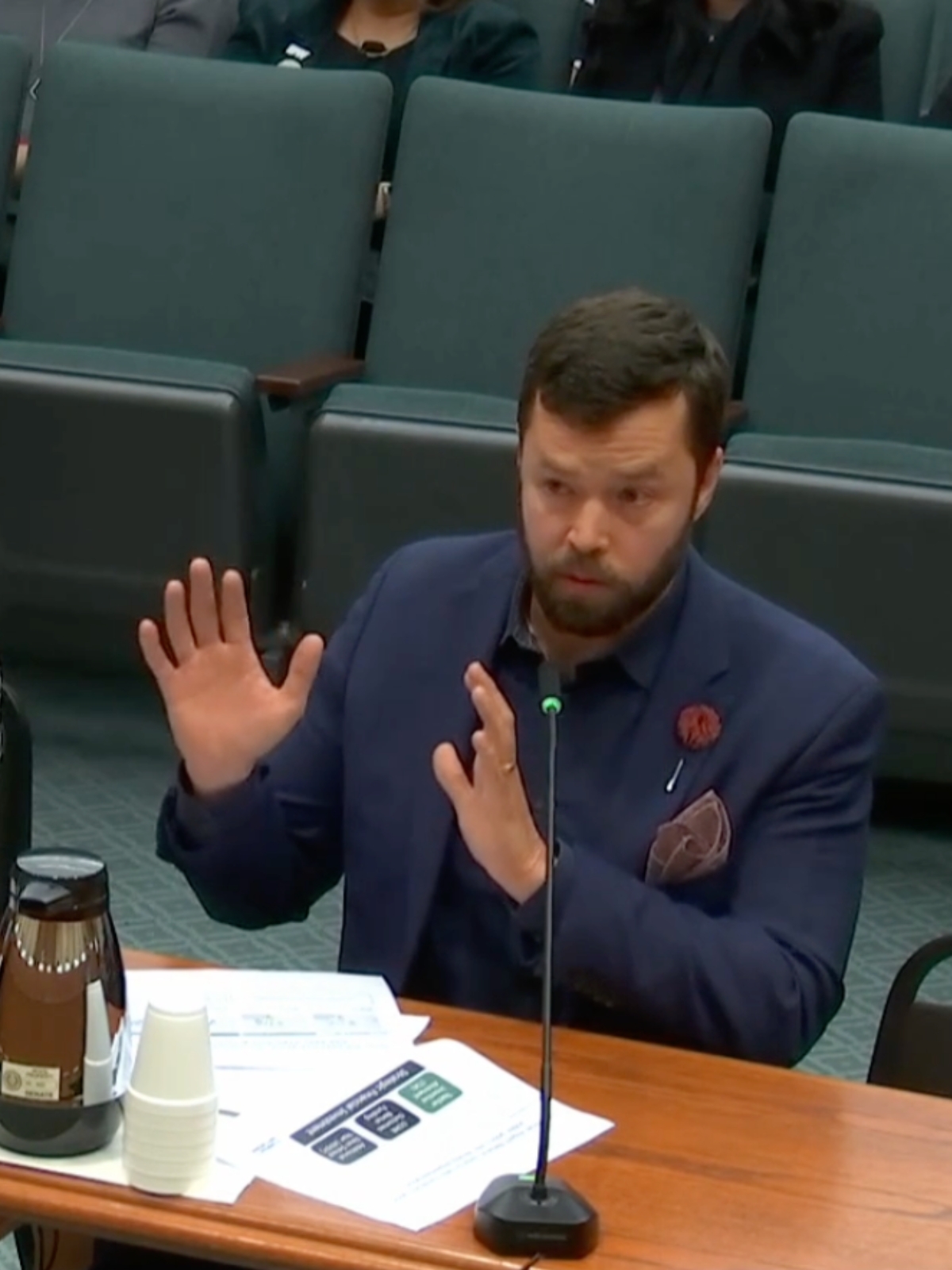Advocating for Equitable Education Policy Across Texas
Let’s ensure that Texas policies put students first – in both intent and implementation.
Educational opportunity leads to increased prosperity
To support Texas’ continued economic success, Commit focuses on evidence-based education policies spanning quality early learning to postsecondary pathways and workforce readiness.


Data-driven strategies to improve outcomes
Commit supports with the passage and implementation of education policies that drive student success at critical academic milestones. These policies are supportive of four overarching priorities:
Strong Foundations
To support a strong workforce today and tomorrow, Texas must build an integrated, aligned, and high-quality early childhood education system that sets students, families, and our state up for success.
Strong Foundations Wins
SB 2118 (85R), authorizing Dallas College and other Texas public community colleges to offer a 4-year degree program in under-supplied fields such as Early Childhood Education and health care. Since the bill’s passage, Dallas College’s school of education has become one of the largest in the state, offering a bachelor's degree at a total tuition cost over four years of less than $10,000
HB 3 (86R), establishing historic funding enabling full day Pre-K through creation of the early education allotment while concurrently requiring all school boards to publicly set goals in 3rd grade reading and math disaggregated by family income and other demographics
HB 680 (86R), assigning an individual ID number (PEIMS) to students in the state’s subsidized child care program to help increase coordination between Texas Workforce Commission (TWC) and Texas Education Agency (TEA) for Texas' youngest learners
HB 2607 (87R), mandating that child care providers accepting state scholarship funding participate in the state’s quality-based child care rating and improvement system
HB 1605 (88R), extending additional state aid to school districts for the provision of high-quality instructional materials which increase curriculum rigor and reduce teacher burdens through the provision of standardized daily lesson plans, etc.
HB2 (89R), increasing the Early Education Allotment and providing funding to support targeted early literacy interventions (math academies, math and reading intervention academies), early identification screeners, high-quality intervention, and at-home learning
HB 3963 (89R), creating an Early Childhood Integrated Data System, codifying existing efforts to develop an ECIDS, creating a unified system for state agencies to share program data, inform policy, and enhance programs
HB 117 (89R), calling for the creation of a Governor's Task Force on Governance of Early Childhood Education (ECE) and care
Academic Success
Sustaining equitable, strategic investments in Texas schools is critical for the success of our students and our state as we strive to become a national leader in education
Academic Success Wins
HB 3 (86R), established Reading Academies to support training in the Science of Reading; created the Teacher Incentive Allotment Allotment to fund districts willing to robustly evaluate and pay their educators based on performance; established Additional Days School Year funding for districts willing to extend the school year to provide additional time to accelerate student learning; created College, Career and Military Readiness outcomes bonus funding to districts based on the number of students graduating high school assessed as ready and successfully transitioning to college, the military or the workforce via industry certification.
HB 5 (87R), increasing access to broadband internet
HB 1416 (88R), providing requirement for accelerated instruction for students who have fallen below grade level expectations
SB 2124 (88R), requiring increased access for proficient students to advanced mathematics pathways in middle school
HB2 (89R), increasing state funding for public education by $8.5B over the next biennium, including historic pay raises for educators and support staff, certification of all classroom teachers in core subjects by 2030, increased funding for Teacher Incentive Allotment, Additional Day School Year modifications and additional funding, Resource Campuses modifications, statewide promotion and support for High Quality Instructional Materials, and Educator Preparation Programs (Preparing and Retaining Educators through Partnership Programs Allotment" (PREP Allotment))
Postsecondary Success & Workforce Development
Strategic investments in public higher education such as community colleges will help Texas build the workforce we need for a more prosperous future
Postsecondary Success & Workforce Development Wins
HB 3 (86R), historic public education finance reform including investment in CCMR outcomes funding bonuses; requiring FAFSA completion to graduate from high school; and requiring school boards to set public goals surrounding CCMR readiness
HB 3767 (87R), requiring Tri-Agencies to set alignment goals and making data more easily accessible and actionable
SB 2118 (85R), authorizing Dallas College and other Texas public community colleges to offer a 4-year degree program in under-supplied fields such as Early Childhood Education and health care. Since the bill’s passage, Dallas College’s school of education has become one of the largest in the state, offering a bachelor's degree at a total tuition cost over four years of less than $10,000 and filling a critical gap in high-quality early education teachers
SB 1102 (87R), establishing the Texas Reskilling and Upskilling through Education Initiative (TRUE) that provides grants to community colleges for partnering with employers on programs in high-demand fields
SB 1230 (87R), establishing the Texas Commission on Community College Finance to study the system and make recommendations that became the basis of Texas’ landmark legislation reform known as HB 8
HB 8 (88R), tied community college funding to student outcomes and receipt of credentials of value while incentivizing alignment to workforce needs. Legislation also created state funding for dual credit for every low-income high school student in Texas.
HB2 (89R), investing $153M in CCMR, CTE and workforce aligned programs, increases College, Career, and Military Readiness Outcomes Bonus Funding from $2,000 to $4,000 per successful special education graduate, and expands school board responsibility for CCMR
SB 1786 (89R), enhancing community college funding for greater workforce alignment, building on HB 8 (88R) to better prepare students for high-demand, high-wage jobs
Monitoring Progress
From academic snapshots to comparative assessments in core subjects, transparent, reliable data systems enable decision-makers — parents, school leaders, and policymakers — to identify opportunities and stay informed
Monitoring Progress Wins
HB 3906 (86R), relating to the assessment of public school students
HB1525 (87R), training for educators in the science of literacy acquisition
HB 3270 (87R), relating to improving the state’s accountability system
HB 4545 (87R), establishing new requirements for supplemental accelerated instruction, including smaller ratios for high-impact tutoring for students who do not pass the state's standardized STAAR assessment
SB 788 (87R), establishing a data sharing agreement for regions
Implementation is key
Our policy work is far from finished when a piece of legislation is passed. Commit and its partners are proud to support with the implementation of students-first policies through the following initiatives:

The Texas Impact Network
The Texas Impact Network, a joint venture with Educate Texas, provides support and consultation that allows rural, suburban, and urban districts alike the ability to unlock new resources on behalf of the students they serve.

The Texas Urban Council
The Texas Urban Council is an independent network comprising superintendents of many of the state’s largest urban school districts, and Commit is a proud facilitator of their regular convenings centered on shared student outcome goals.



Inviting bigger conversations across the state of Texas
Commit is a proud member and convener of three leading statewide coalitions focused on three interrelated areas of education policy:

Early Matters Texas
Early Matters Texas is a statewide collaborative of business, civic, education, nonprofit and philanthropic leaders dedicated to economic mobility and prosperity for all Texas families through strategic investments in both policies and practices that support children from birth to age 8.

InvestEdTX
InvestEdTX is a non-partisan, pro-public education coalition that focuses on Texas public school students and college, career or military readiness for all.

Aim Hire Texas
Aim Hire Texas is a statewide consortium of advocates, employers, non-profit organizations, and education and training providers working to improve the Texas workforce system for the benefit of all Texans and their employers.










.avif)